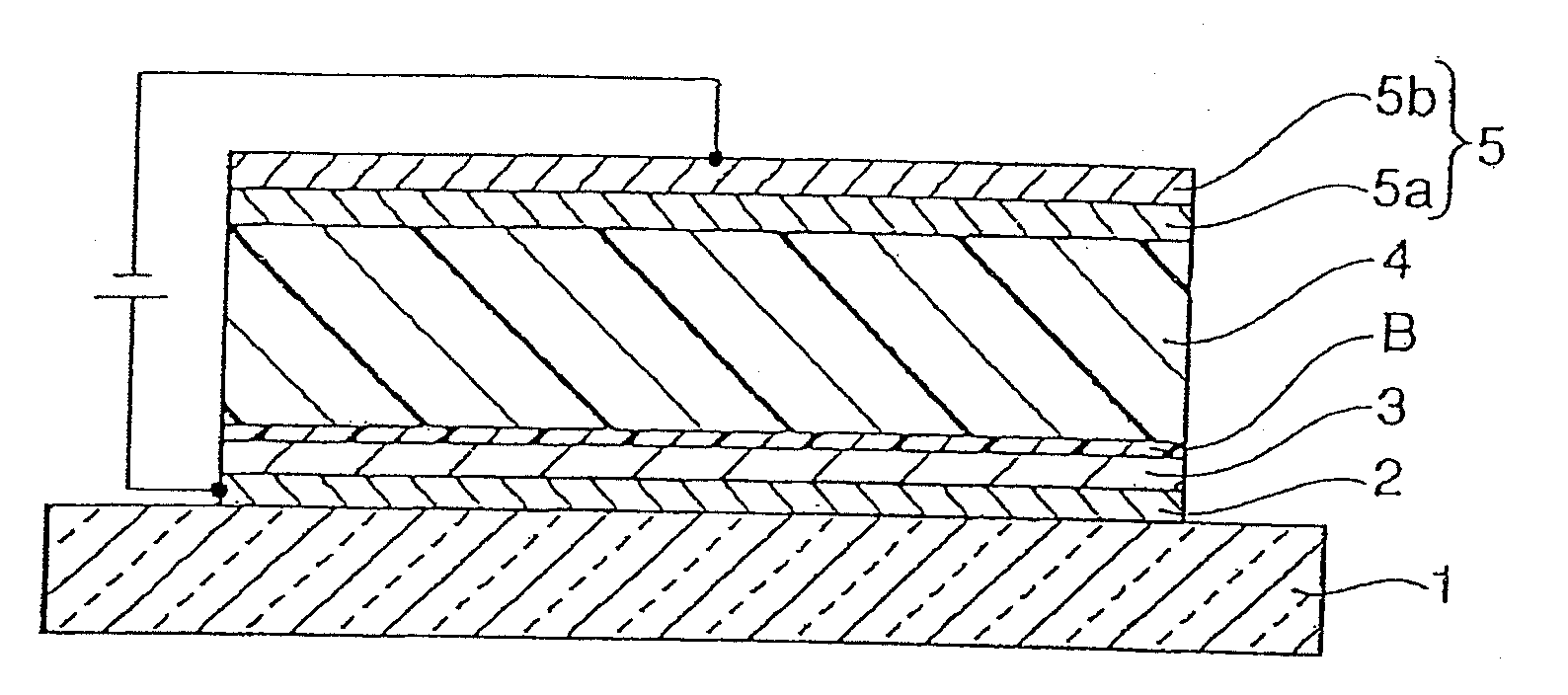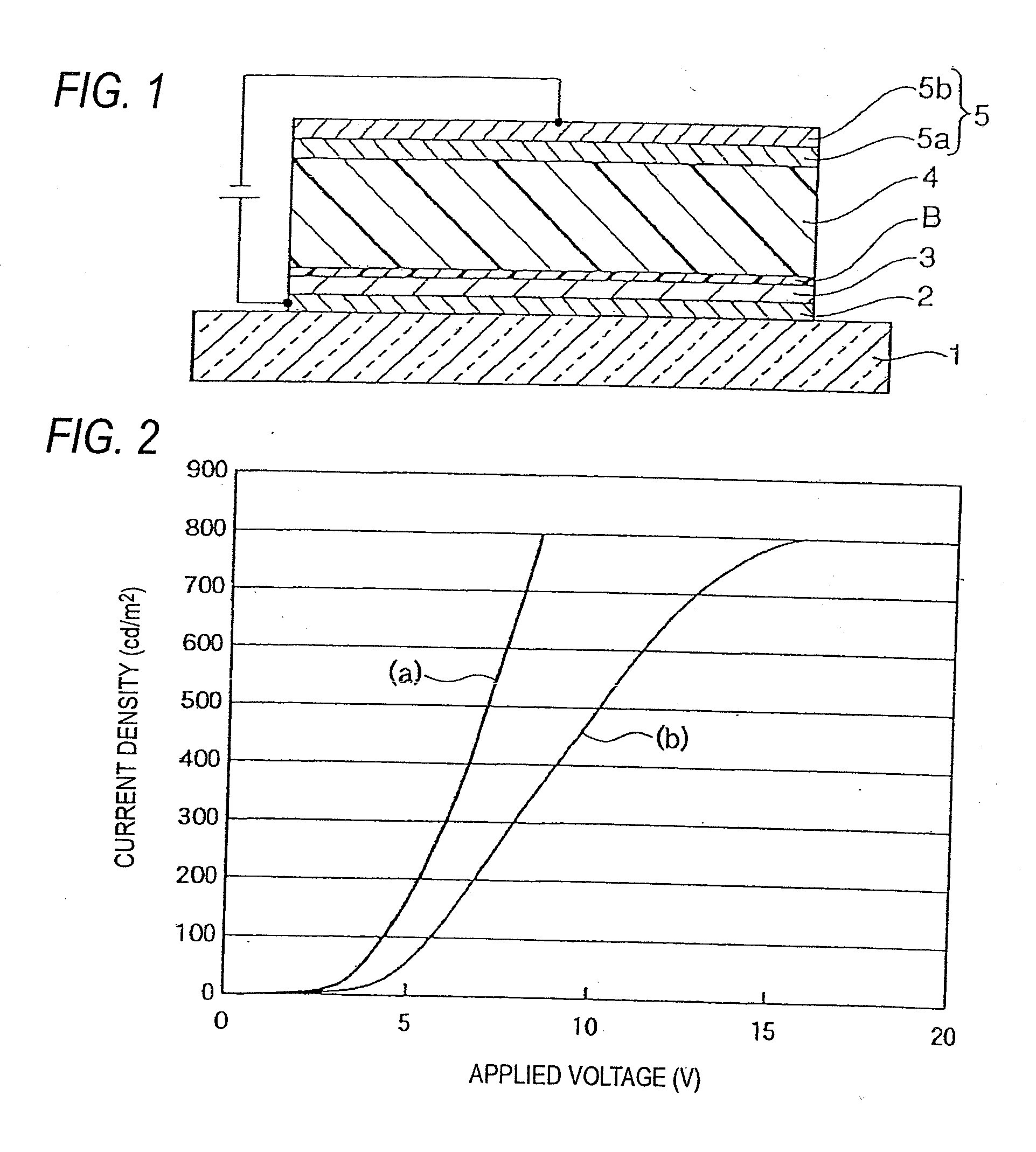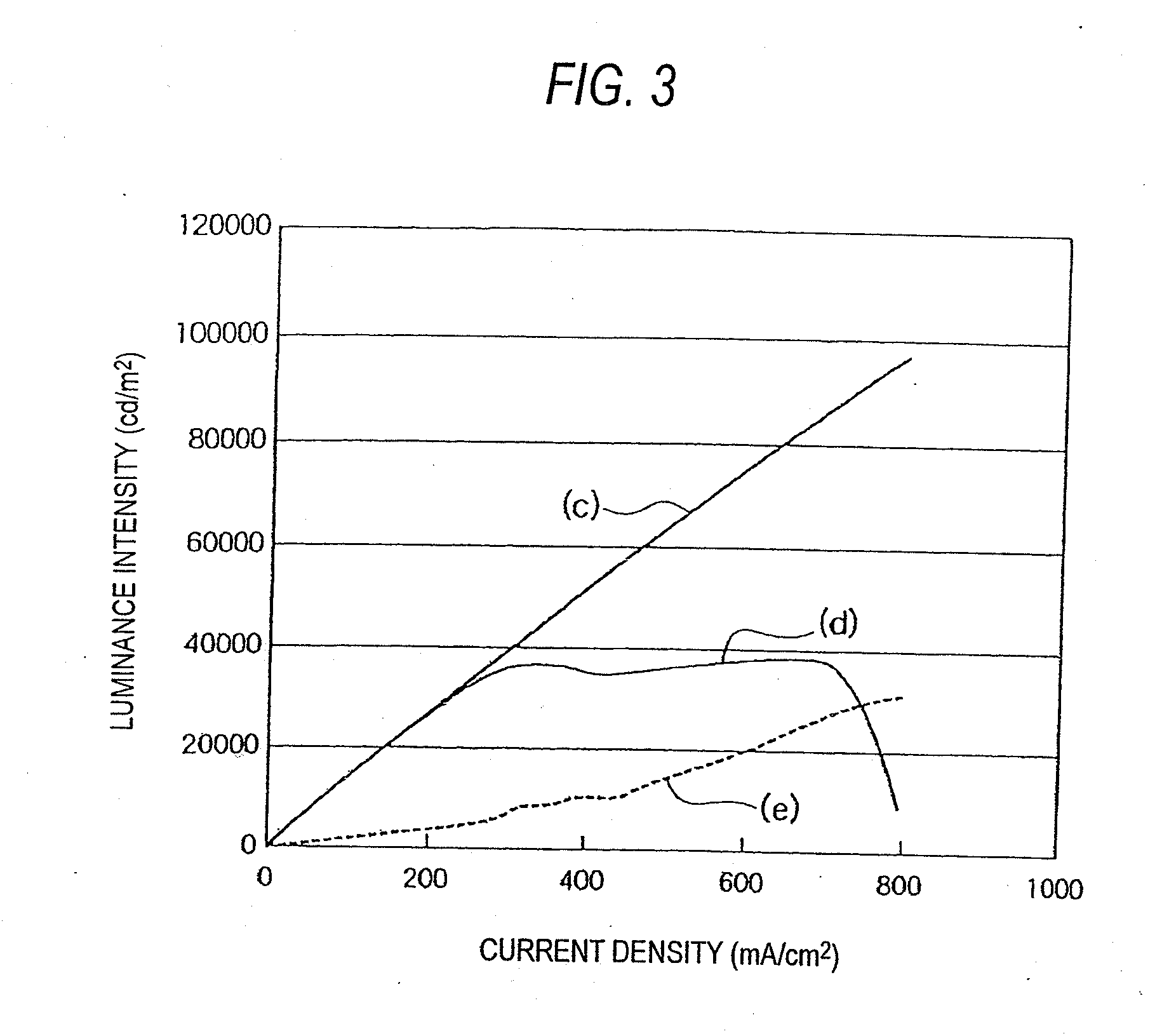Organic electroluminescent device and method for manufacturing the same
a technology of electroluminescent devices and organic materials, which is applied in the manufacture of electrode systems, electric discharge tubes/lamps, and discharge tubes luminescence screens, etc., can solve the problems of insufficient life properties of devices, inability to obtain great luminescence intensity, and inability to know the details of the process, etc., to achieve stable electron injection, excellent life properties, and stable operation
- Summary
- Abstract
- Description
- Claims
- Application Information
AI Technical Summary
Benefits of technology
Problems solved by technology
Method used
Image
Examples
embodiment 1
[0080]FIG. 1 is a schematic diagram of the polymeric organic EL device according to the embodiment of the invention.
[0081]The present embodiment is characterized in that a thin film of metal oxide is formed as a charge injection layer 3 on a transparent anode 2 formed on a light transmitting substrate 1, and laminated thereon are a layer of polymeric material as a buffer layer B having the electron-blocking function, and another layer of polymeric material as a light emitting layer 4, with a cathode 5 being formed above them all.
[0082]That is to say, the organic electroluminescent device of the embodiment consists of, as shown in FIG. 1, substrate 1 made of a transparent glass material, an ITO layer (indium titanium oxide) as an anode 2 formed on the substrate 1, a thin film of metal oxide as charge injection layer 3 formed thereon, an electron-blocking layer made of a polymeric material as buffer layer B, light emitting layer 4 made of a polymeric material, and a cathode 5 made of ...
example 1
[0089]Next, Examples of the invention will be presented.
[0090]The structure is identical with the structure given in FIG. 1, and it will be explained with reference to FIG. 1.
[0091]The organic electroluminescent device of Example 1 is composed of a substrate 1 made of a 1 mm-thick glass sheet referred to as Corning 7029#, an anode 2 composed of a 20 nm-thick ITO thin film formed thereon, a charge injection layer 3 composed of a 20 nm-thick thin film of molybdenum oxide formed on the anode 2, a 20 nm-thick buffer layer B of a polyfluorene-based compound, in particular poly[9,9-dioctylfluorenyl-2,7-diyl]-alt-co-(N,N′-diphenyl)-N,N′-di(p-butyl-oxyphenyl)-1,4-diaminobenzene, formed on the charge injection layer 3, a 80 nm-thick light emitting layer 4 composed of a polyfluorene-based compound, in particular poly[(9,9-dioctylfluorenyl-2,7-diyl)-co-1,4-benzo-{2,1′-3}-thiadiazole, and a cathode 5 which is formed on the light emitting layer 4 and is composed of a 20 nm-thick calcium (Ca) lay...
example 2
[0134]Next, Example 2 of the invention will be discussed.
[0135]In Example 1 above, a polyfluorene-based compound was used in the light emitting layer, but this Example uses a PPV-based material, poly[2-methoxy-5-(2-ethylhexyloxy)-1,4-phenylenevinylene], in the light emitting layer 4. This material is also commercially available from Nihon SiberHegner K.K., like Example 1.
[0136]The other structures are constituted identically with Example 1.
[0137]In this case, the luminescence intensity can be increased further in the universal.
[0138]Furthermore, in Example 1 and Example 2 a glass substrate was used as the substrate 1, but it is not limited to glass. Generally glass is used. Also in the present Example, a glass substrate is employed. There have been proposed as the substrate material, a number of materials including glass, plastic film and the like, and these all can be employed as the substrate 1 in the present invention. In addition, if the direction of light extraction is taken to...
PUM
| Property | Measurement | Unit |
|---|---|---|
| thickness | aaaaa | aaaaa |
| thickness | aaaaa | aaaaa |
| current density | aaaaa | aaaaa |
Abstract
Description
Claims
Application Information
 Login to View More
Login to View More - R&D
- Intellectual Property
- Life Sciences
- Materials
- Tech Scout
- Unparalleled Data Quality
- Higher Quality Content
- 60% Fewer Hallucinations
Browse by: Latest US Patents, China's latest patents, Technical Efficacy Thesaurus, Application Domain, Technology Topic, Popular Technical Reports.
© 2025 PatSnap. All rights reserved.Legal|Privacy policy|Modern Slavery Act Transparency Statement|Sitemap|About US| Contact US: help@patsnap.com



